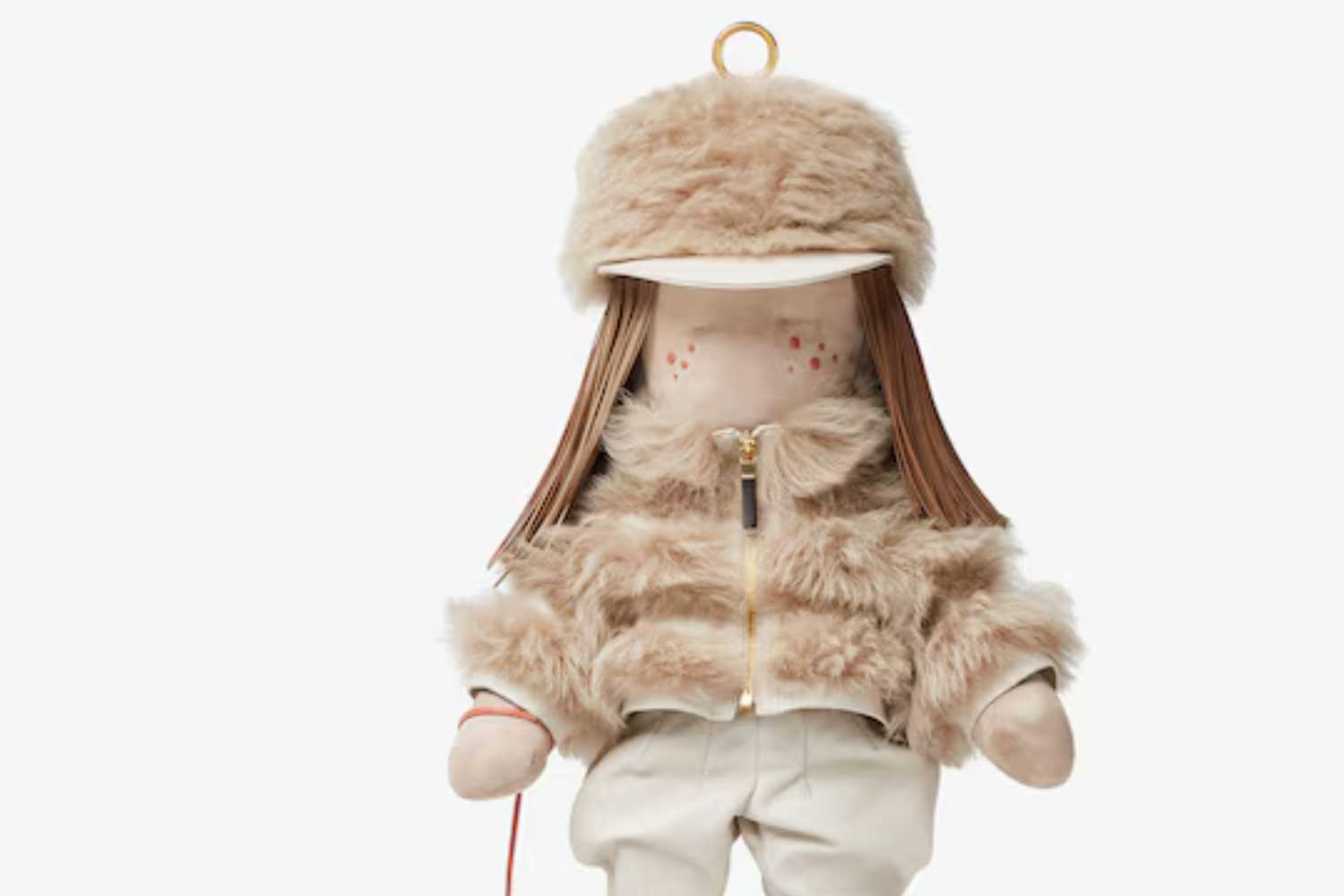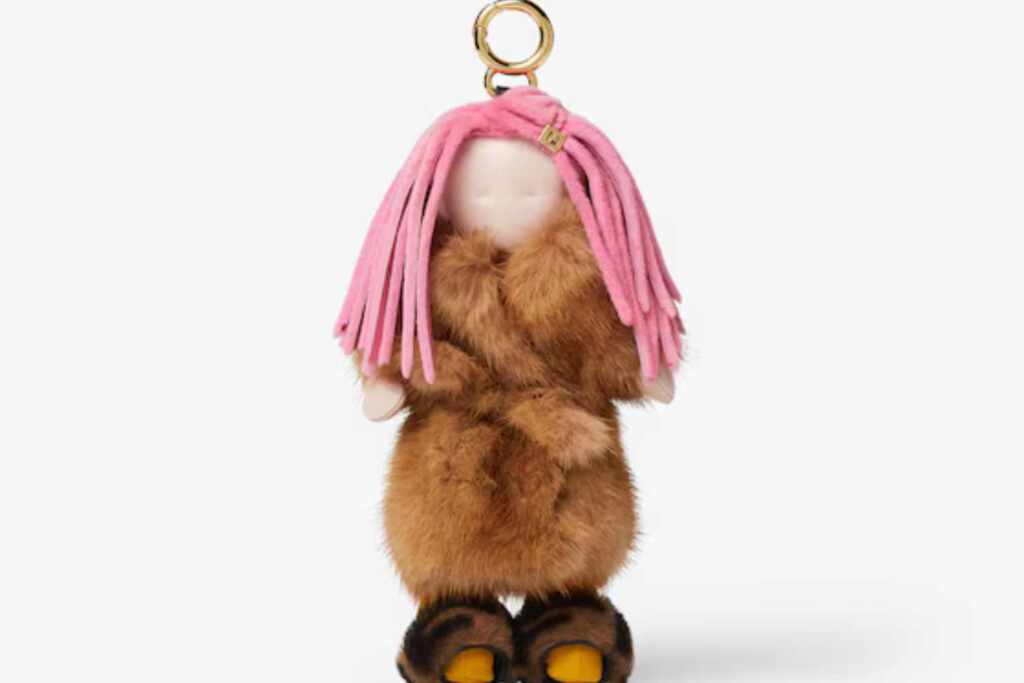Luxury brands are embracing childhood nostalgia with couture rag dolls, turning playful charms into high-priced status symbols that reshape fashion economics and social media trends.

@fendi.com
Luxury has a new obsession, and it’s surprisingly soft to the touch. After the global success of Labubu, those mischievous, pointy-eared creatures dangling from thousands of designer bags, the industry has set its sights on a bolder frontier: couture rag dolls. These aren’t mere keychains—they’re fully dressed miniature dolls wearing runway outfits, and they’re selling for jaw-dropping prices.
Milan lights the fuse
The movement took off in Milan during the September 2025 Fashion Week. Fendi had already hinted at the idea back in February with its fall–winter collection, but the real explosion came on the spring–summer 2026 runway. From the front row, celebrities and influencers flaunted their dolls like cherished companions—clipped to iconic handbags or simply carried in hand.
Models had teased the trend earlier, parading oversized “macro dolls” decked out in sequins, crochet hats and playful socks. The message was clear: luxury was ready to embrace a childlike sense of fun.
The playful price of luxury
The “Fendi Best Friends Forever” charm sells for about $1,580 (€1,500)—a price that defies the logic of any traditional handbag accessory. The dolls evoke the nostalgic spirit of 1980s Cabbage Patch Kids, with their messy hair and whimsical expressions, but they’ve been reimagined through a high-fashion lens.

@fendi.com
Some of these tiny muses wear miniature replicas of actual runway outfits, right down to the Pequin stripe stitching and intricate ballerina buns. Fendi isn’t alone in this oversized keychain race; Balenciaga and Louis Vuitton have already joined the game, ensuring the craze isn’t confined to one maison.
Asian roots and kawaii culture
Like many modern fashion trends, this one traces its roots back to Asia. Japan’s culture of “kawaii”—think Hello Kitty—has long celebrated cuteness and playfulness as cultural values.
The Labubu characters, created in 2015 by Hong Kong artist Kasing Lung and distributed by China’s Pop Mart, paved the way. Celebrities such as Rihanna, Lisa from Blackpink, and Dua Lipa were spotted with them hanging from their bags. Their cheeky grins and pointy ears proved the public was ready for accessories that blur the line between childish whimsy and luxury sophistication.
On TikTok and Instagram, Labubu unboxing videos reached millions of views, igniting a feverish collector culture.
Accessible luxury, reinvented
Luxury houses are also playing a strategic game. With wealthy consumers buying fewer big-ticket items, brands are offering lower-cost charms to let them refresh existing handbags without splurging on a new one.
It’s working. Instead of dropping thousands on a fresh Fendi, shoppers can spend a few hundred and transform their look. For some accessory brands, bag charms have boosted revenues by 63%. Customization has become the engine of this movement: personal touches turn a mass-produced Hermès Birkin into “this is mine”, a unique statement rather than just another luxury product.
The social media echo chamber
Social media has supercharged the craze. TikTok and Instagram are overflowing with unboxing and bag-styling videos that rack up millions of views in days. Fendi dolls are already viral, with creators flaunting growing collections and competing to snag the rarest editions.
For Gen Z, luxury has become a game—literally. Collecting is part of the thrill, part of the purchase. Owning the doll is only half the story; showing it off online completes the ritual.
@wwd At #Fendi even the dolls have baguettes. #tiktokfashion #tiktokfashionweek
The psychology behind the craze
Fashion psychologists see something deeper beneath the sequins. These dolls, they argue, offer comfort in uncertain times. They’re tactile reminders of childhood, a period untouched by adult stress. Carrying one becomes a subtle act of emotional rebellion: a way to offset the weight of a turbulent world with something undeniably light.
The irony, of course, is that these tiny tokens cost as much as a monthly salary. That tension—between childishness and high price—gives the trend its sharp edge.
Fashion historian Ruby Redstone, author of the newsletter Old Fashioned, put it this way: “I tend not to say ‘We’re looking for cute things because the world is hard and sad.’ But I have the feeling that we’re in a pretty extreme case right now. The tougher the political climate, the more everyone is drawn to these dopamine-inducing cute things we can sell. And I don’t hate it. It’s a trend I feel completely at peace with, because it brings me joy.”
A fleeting fad or a lasting shift?
Designer rag dolls are the natural evolution of accessible luxury. Not everyone can afford a $5,300 (€5,000) Fendi bag, but many more can buy a $1,580 (€1,500) doll. This strategy broadens the customer base without diluting the brand, acting as an elegant gateway to luxury for younger generations.
The real question is whether this will last. Some analysts predict the trend will fizzle out within a season. Others argue that accessory personalization is here to stay. According to Bloomberg, luxury houses are betting big on charms to offset declining handbag sales—a clear sign the economics are solid.
One thing is certain: by fall 2025, rag dolls are no longer just childhood memories. They’re the season’s most coveted status symbols. As Fendi’s Milan runway proved, these playful accessories can steal the spotlight even from centennial collections. Luxury has embraced “infantile chic”, and the result is unexpectedly serious.
